SINAN THE ARCHITECT
Born in Ağırnas village of Kayseri, died in 17 July 1588 in Istanbul. Date of birth is not exact.
Yavuz Sultan Selim was brought to Istanbul as a devshirmeh.
Became a Janissary at the time of Sultan Suleyman the Lawmaker. Joined a lot of campaigns. He has recived a very high reputation the rank of "Haseki" in the guild of janissaries.
Mimar Sinan participated in campaigns of Corfu, Pulya (1537) and Moldova (1538), at Moldova (Kara Buğdan) campaign has set up a bridge in thirteen days on the river Prut and won the admiration of Lawful Sultan Süleyman. Same year he was promoted to chief architect.
Some Works
Sinan's three works made before being brought chief architect is striking. These Hüsreviye Complex from Aleppo, in Gebze Çoban Mustafa Pasha Complex in Istanbul, and Haseki Complex made for Roxelana.
His three major works after being chief architect, showing the development of his art are like steps. The first is Şehzadebaşı Mosque and Complex. At the Complex there are also imaret, kitchen, a caravanserai and madrasa separated by a street.
Suleymaniye Mosque, in Istanbul is the most magnificent work of Sinan the Architect. Twenty-seven meters in diameter large dome, gradually rising from the floor of the building has been sitting in on a very proportionally and harmonious manner. From this simple expression of calm and dignity and harmonious appearance with the Suleymaniye Mosque, represents a mature architecture that occur in separate buildings. Süleymaniye Mosque and Complex consist of eight buildings, was the city's second university after Fatih.
Most beautiful work of Sinan the Architect, built when he was eighty years old, is Edirne Selimiye Mosque. Dome of Selimiye, higher than the dome of St. Sophia and deep. The 31.50 meter diameter dome, octagonal-shaped body is sitting on. Three people can go up to the three balconies of thin minarets at the same time without seeing each other. Sinan noted this mosque as his masterpiece and shown all his art in Selimiye.
Sinan the Architect, has examined with great care all the works has seen, has not imitated any art,, continuously developed and renewed. Works in the columns, walls and other parts that may be resistance to the load they carry is not thicker than the amount. This calculation is noteworthy in all the architectural elements he used.
Sinan the Architect is also an urban planning expert. Of work to be done, he would arrange environment before. Showed great success in site selection and he placed his works around in the most appropriate manner.
Known works: 84 mosques, 53 small mosques, 57 madrasas, 7 darülkurras (Kuran reading place), 22 tombs, 17 imarets, 3 hospitals, 5 belt waterways, 8 bridges, 35 palaces,
20 caravanserai, 8 cellar, 48 baths to be 364 pieces.
Earthquake Resistant
People who are reviewing the large number of architect's work, say that Sinan take all known and necessary measures against earthquakes. One of them is basal grout used at foundation. By this grout which we only saw at Sinan's works, seismic waves are absorbed, becomes ineffective. Site selection of structures is still interesting. For enforcing the ground, he compacted the soil with piles and built retaining walls. For example his aim of 6-year hold on the basis of Sulaimaniye was to ensure the foundation fully sit onto base.
Sinan the Architect, also established a sewage system called drainage in his structures. By the drainage system, it is envisaged to keep structure remain robust by protection against water and moisture. In addition, he used air ducts to provide cold and hot air balance by throwing humidity and moisture out of the structure. Apart from these, he used evacuation channels to prevent the steam that occurs in summers due to heating of water and soil into the building and into foundations of the structure. Steam evacuation and drainage channels have been put into practice depending on the moisture channels.
MİMAR SİNAN
Kayseri'nin Ağırnas köyünde doğdu, 17 Temmuz 1588'de İstanbul'da öldü. Doğum tarihi kesin değildir
Yavuz Sultan Selim zamanında devşirme olarak İstanbul’a getirildi.
Kanunî Sultan Süleyman zamanında yeniçeri oldu .Bir çok seferlere katılmış.Yeniçeri ocağında itibarı yüksek “Haseki” rütbesi almıştır
Korfu, Pulya (1537) ve Moldovya (1538) seferlerine katılan Mimar Sinan, Moldovya (Kara Buğdan) seferinde Prut nehri üzerine onüç günde kurduğu köprü ile Kanunî Sultan Süleyman’ın takdirini kazandı. Aynı sene baş mimarlığa yükseldi.
Bazı Eserleri
Sinan’ın mimarbaşılığa getirilmeden evvel yaptığı üç eser dikkat çekicidir. Bunlar Halep’de Hüsreviye Külliyesi, Gebze’de Çoban Mustafa Paşa Külliyesi ve İstanbul’da Hürrem Sultan için yapılan Haseki Külliyesi’dir.
Mimarbaşı olduktan sonra verdiği üç büyük eser, O’nun sanatının gelişmesini gösteren basamaklar gibidir. Bunların ilki, Şehzadebaşı Camii ve Külliyesidir. Külliyede ayrıca imaret, mutfak, kervansaray ve bir sokak ile ayrılmış medrese bulunmaktadır.
Süleymaniye Camii, Mimar Sinan’ın İstanbul’daki en muhteşem eseridir. Yirmi yedi metre çapındaki büyük kubbe, zeminden itibaren tedricen yükselen binanın üzerine gayet nisbetli ve ahenkli bir şekilde oturtulmuştur. Sükûnet ve asaleti ifade eden bu sade ve ahenkli görünüşü ile Süleymaniye Camii, olgunlaşmış bir mimariyi temsil etmektedir.Sekiz ayrı binadan meydana gelen Süleymaniye Camii ve Külliyesi, Fatih’ten sonra şehrin ikinci üniversitesi olmuştur.
Mimar Sinan’ın en güzel eseri, seksen yaşında yaptığı Edirne Selimiye Camii’dir. Selimiye’nin kubbesi, Ayasofya kubbesinden daha yüksek ve derindir. 31,50 metre çapındaki kubbe, sekizgen şeklindeki gövde üzerine oturmuştur. Üç şerefeli ince minarelerine üç kişi aynı anda birbirini görmeden çıkabilmektedir.Sinan bu camiin ustalık eseri olduğunu ve bütün sanatını Selimiye’de gösterdiğini belirtmektedir.
Mimar Sinan, gördüğü bütün eserleri büyük bir dikkatle incelemiş, fakat hiçbirini aynen taklid etmeyip, sanatını devamlı geliştirmiş ve yenilemiştir. Eserlerindeki sütunlar, duvarlar ve diğer kısımlar taşıdıkları yüke mukavemet edebilecek miktardan daha kalın değildir. Kullandığı bütün mimari unsurlarda bu hesap dikkati çeker.
Mimar Sinan aynı zamanda bir şehircilik uzmanıdır. Yapacağı eserin, önce çevresini tanzim ederdi. Yer seçiminde de büyük başarı göstermiş ve eserlerini, çevresine en uygun tarzda yerleştirmiştir.
Bilinen eserleri: 84 camii, 53 mescid, 57 medrese, 7 darülkurra( Kur an okuma yeri), 22 türbe, 17 imaret, 3 darüşşifa, 5 su yolu kemeri, 8 köprü, 20 kervansaray, 35 saray, 8 mahzen, 48 hamam olmak üzere 364 adettir.
Depreme Dayanıklı
Mimarın çok sayıdaki eserini inceleyenler, Sinan’ın depreme karşı bilinen ve gereken tüm tedbirleri aldığını söylemekteler.Bu tedbirlerden biri, temelde kullanılan taban harcıdır.Sadece Sinan’ın eserlerinde gördüğümüz bu harç sayesinde, deprem dalgaları emilir, etkisiz hale gelir. Yine yapıların yer seçimi de ilginç. Zeminin sağlamlaşması için kazıklarla toprağı sıkıştırmış dayanak duvarları inşa ettirmiş.Mesela Süleymaniye’nin temelini 6 yıl bekletmesi, temelin zemine tam olarak oturmasını sağlamak içindir.
Mimar Sinan, yapılarında ayrıca drenaj adı verilen bir kanalizasyon sistemi de kurmuştur. Drenaj sistemiyle yapının temellerinin sulardan ve nemden korunarak dayanıklı kalması öngörülmüştür. Ayrıca yapının içindeki rutubet ve nemi dışarı atarak soğuk ve sıcak hava dengelerini sağlayan hava kanalları kullanmış. Bunların dışında yazın suyun ve toprağın ısınmasından dolayı oluşan buharın, yapının temellerine ve içine girmemesi için tahliye kanalları kullanmıştır. Buhar tahliye ve rutubet kanalları drenaj kanallarına bağlı olarak uygulamaya konulmuştur.
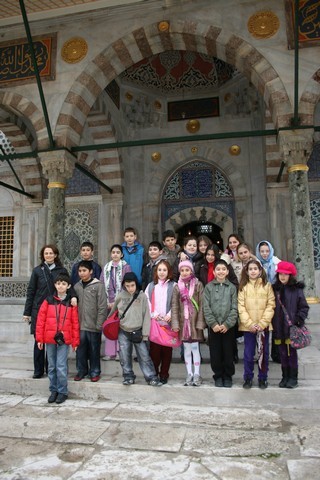
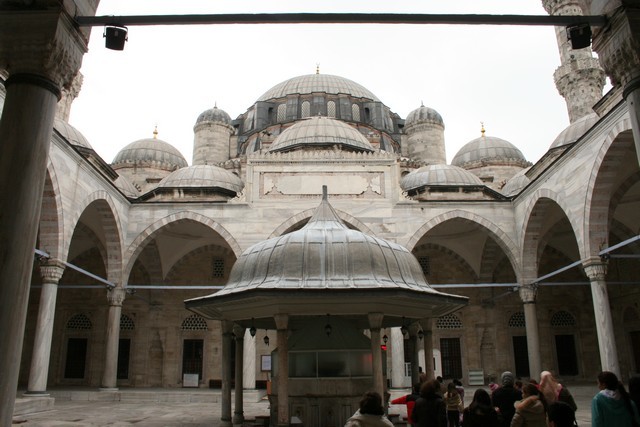
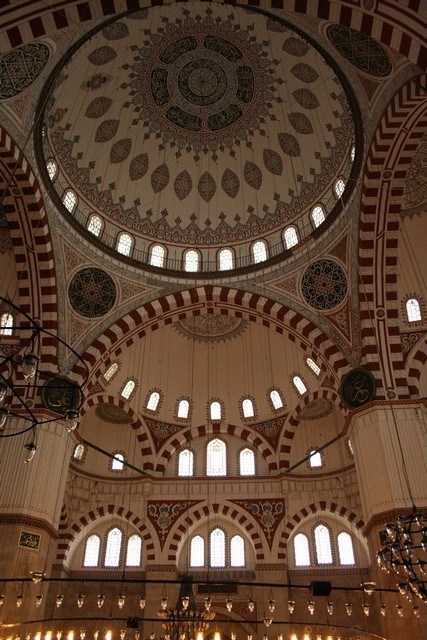
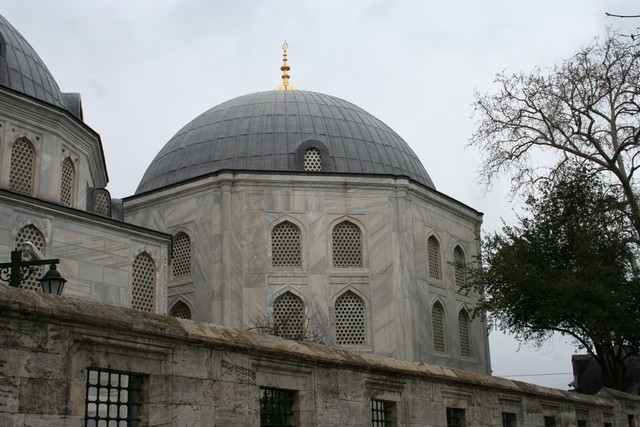
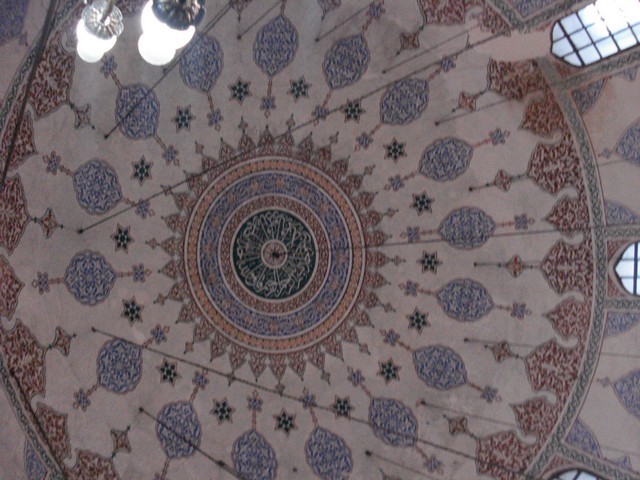
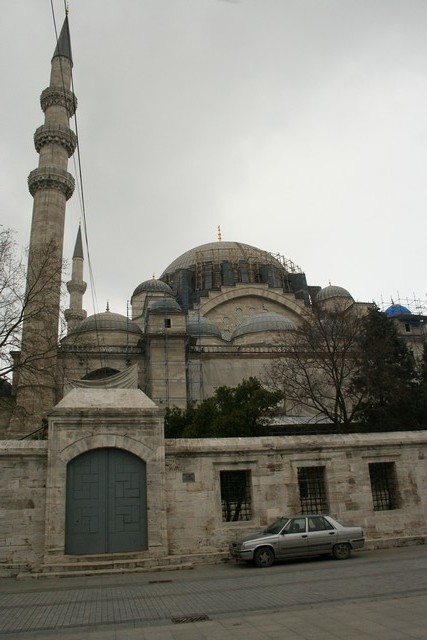

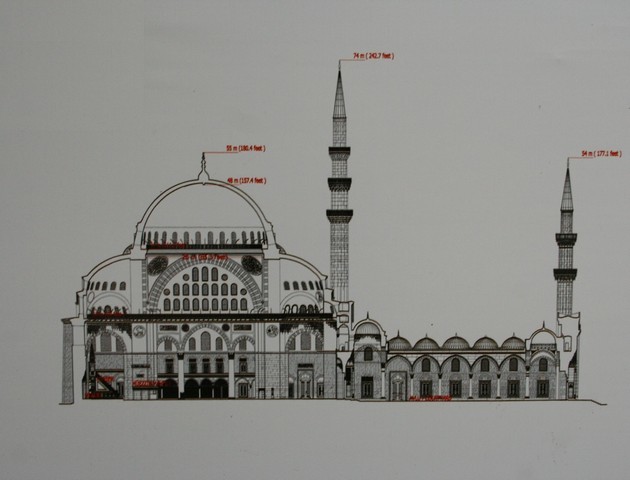 |